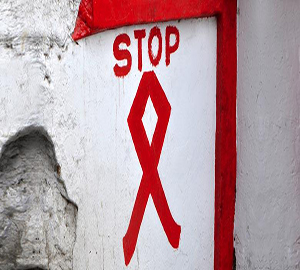Community Acceptability of Voluntary Medical Male Circumcision (VMMC) as a Strategy in the Fight against the Spread of HIV and AIDS among Residents of Homa-Bay County Kenya

Abstract:
Background:
Voluntary medical male circumcision (VMMC) reduces
female-to-male transmission of HIV by about 60% leading to the global WHO and UNAIDS
recommendation of VMMC to men. A traditionally non-circumcising Luo ethnic community
predominantly occupies Homa-Bay County in western Kenya where the uptake of VMMC
as an intervention for prevention of HIV acquisition has been low. Community
dialogue is a participatory communication process
of sharing information aimed at reaching a common understanding and workable solution.
The current study documented the baseline status on the acceptability of uptake of
VMMC and access to voluntary counselling and testing (VCT) among residents of Homa-Bay
County, Kenya prior to intervention (community dialogue).
Methods:
Males of Luo ethnic group, uncircumcised and aged 18-49 years drawn from 419 households
were recruited. Baseline information (before intervention) were collected to capture
the acceptance of VMMC, circumcision status and testing for HIV in the population.
Structured and semi-structured questionnaires were used for data collection.
Results:
Analysis showed
that in Ndhiwa, Rachuonyo North and Suba South Sub-counties, 54.9%, 84.1% and 69.8%,
respectively, had accessed VCT, while 3.5%, 0.7% and 10.8%, respectively had undergone
VMMC. The proportions of those who accessed VCT services were significantly higher
(P<0.0001) while the proportions of those who had undergone VMMC were
significantly lower (P<0.0001) across the three sub-counties.
Conclusion:
These results
demonstrate that even though majority access VCT services to know their HIV status,
significantly few men decide to undergo VMMC. This revealed a decreased acceptability
of this service in Homa-Bay County prior to the intervention.
Keywords: VMMC,
VCT, community acceptability, HIV and AIDS.
References:
[1].Bailey, R.C.,
Moses, S., Parker, C.B., Agot, K., Maclean, I., Krieger, J.N., Williams, C.F.,
Campbell, R.T., and Ndinya-Achola, J.O. (2007). Male circumcision for HIV
prevention in young men in Kisumu, Kenya: a randomised controlled trial. Lancet
369, 643-656.
[2].Brito, M.O., Caso,
L.M., Balbuena, H., and Bailey, R.C. (2009). Acceptability of male circumcision
for the prevention of HIV/AIDS in the Dominican Republic. PLoS One 4, e7687.
[3].CDC (2013). Adult
Blood Lead Epidemiology and Surveillance (ABLES). Cincinnati, OH: US Department
of Health and Human Services, CDC, National Institute for Occupational Safety
and Health; 2013. Available at
http://www.cdc.gov/niosh/topics/ables/description.html.
[4].Clinics,
A.o.O.a.E. (2007). Medical management guidelines for lead-exposed adults.
Washington, DC: Association of Occupational and Environmental Clinics; 2007.
Available at http://www.aoec.org/documents/positions/MMG_FINAL.pdf.
[5].Feng, N., Lu, F.,
Zeng, G., Nan, L., Wang, X.Y., Xu, P., Zhang, J.X., and Zhang, S.E. (2010).
[Acceptability and related factors on male circumcision among young men with Yi
ethnicity in one county of Sichuan province.]. Zhonghua Liu Xing Bing Xue Za
Zhi 31, 281-285.
[6].Figueroa, M.E.,
Poppe, P., Carrasco, M., Pinho, M.D., Massingue, F., Tanque, M., and Kwizera,
A. (2016). Effectiveness of Community Dialogue in Changing Gender and Sexual
Norms for HIV Prevention: Evaluation of the Tchova Tchova Program in
Mozambique. Journal of health communication 21, 554-563.
[7].Galbraith, J.S.,
Ochieng, A., Mwalili, S., Emusu, D., Mwandi, Z., Kim, A.A., Rutherford, G.,
Maina, W.K., Kimanga, D.O., Chesang, K., et al. (2014). Status of voluntary
medical male circumcision in Kenya: findings from 2 nationally representative
surveys in Kenya, 2007 and 2012. Journal of acquired immune deficiency
syndromes 66 Suppl 1, S37-45.
[8].KAIS (2012).
National AIDS and STI Control Programme. Kenya AIDS Indicator Survey 2012:
Final Report. Nairobi, Kenya: NASCOP, 2014.
[9].Godden, B. (2004).
Sample size formulas. Available at: http://williamgodden.com. Accessed 30th
December, 2017.
[10].
KAIS (2014). Kenya AIDS Response Progress
Report: Progress Towards Zero, National AIDS Control Council.
[11].
Kosnett, M.J., Wedeen, R.P., Rothenberg,
S.J., Hipkins, K.L., Materna, B.L., Schwartz, B.S., Hu, H., and Woolf, A.
(2007). Recommendations for medical management of adult lead exposure.
Environmental health perspectives 115, 463-471.
[12].
Kwena, Z.A., Bukusi, E., Omondi, E.,
Ng'ayo, M., and Holmes, K.K. (2012). Transactional sex in the fishing
communities along Lake Victoria, Kenya: a catalyst for the spread of HIV.
African journal of AIDS research: AJAR 11, 9-15.
[13].
MRC U. (2008). Developing and evaluating
complex interventions: new guidance. London: Medical Research Council.
[14].
Luo, H., Liang, X., Chen, J., Yang, X.B.,
Jiang, J.J., Deng, W., Zou, Y.F., Wei, B., Zhang, Z.Y., Liu, Z.H., and Liang,
H. (2011). [Acceptability of male circumcision among male miners in Baise of
Guangxi]. Zhongguo Yi Xue Ke Xue Yuan Xue Bao 33, 313-317.
[15].
Program, N.T. (2013). Health effects of
low-level lead evaluation. Research Triangle Park, NC: US Department of Health
and Human Services, National Toxicology Program; 2013. Available at http://ntp.
niehs.nih.gov/go/36443.
[16].
Sahlu, T., Agonafir, A.T., and Tsegaye,
T.A. (1998). Factors associated with attendance at HIV post-test counselling in
Ethiopia. XII World AIDS Conference; Geneva. June–July 1998; abstract 33280.
[17].
UNAIDS (2007). Male circumcision: global
trends and determinants of prevalence, safety and acceptability Geneva: World
Health Organisation; 2007. Avaiable:
http://whqlibdoc.who.int/publications/2007/9789241596169_eng.pdf. UNAIDS.

